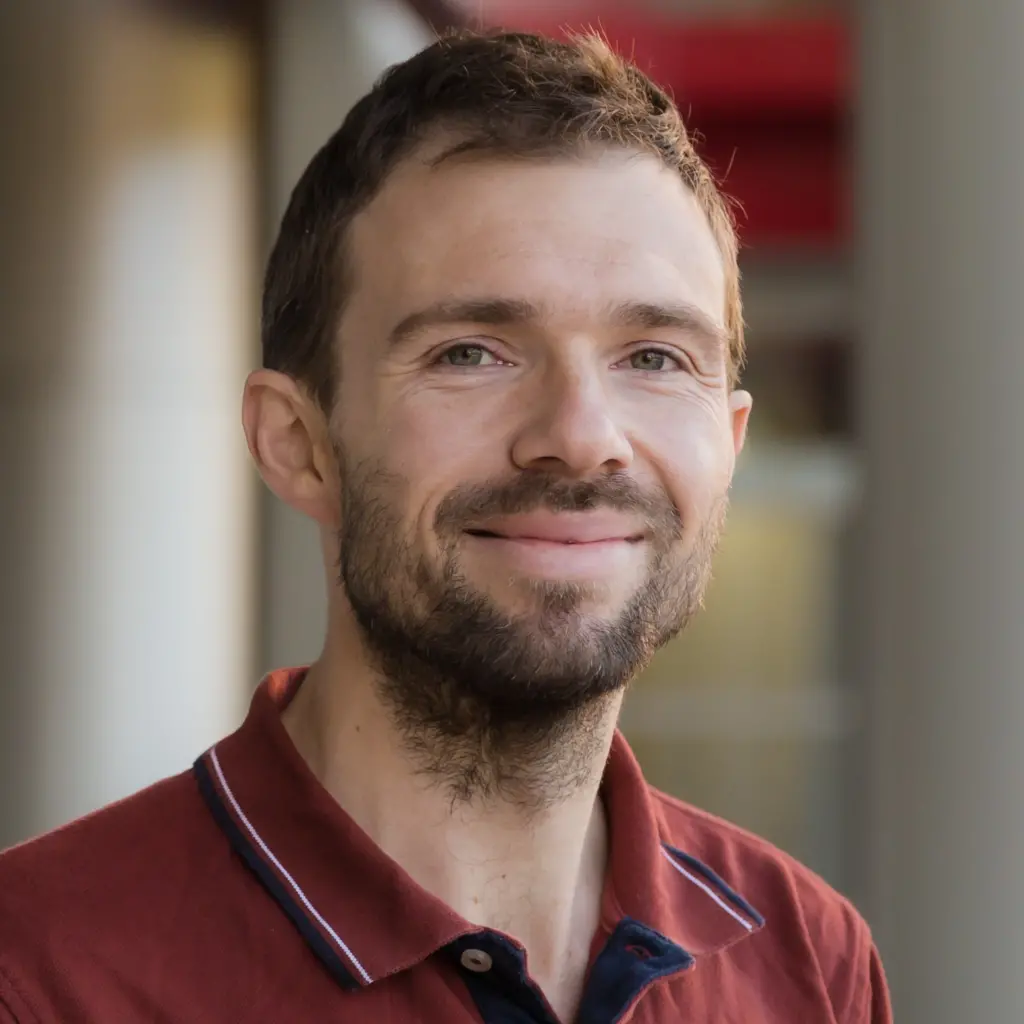In energy policy debates, nuclear energy and renewable energy technologies are sometimes viewed as competitors.
In reality, they could be better, together.
 Ben Lindley
Ben Lindley
At the University of Wisconsin-Madison, Ben Lindley, an assistant professor of engineering physics and an expert on nuclear reactors, and Mike Wagner, an assistant professor of mechanical engineering and a solar energy expert, are studying the feasibility and benefits of such a coupling.
In partnership with the National Renewable Energy Laboratory (NREL) and Westinghouse, they’re designing an integrated energy system that combines a next-generation nuclear reactor and a concentrating solar power plant. In addition, they’re developing tools and algorithms to optimize the energy production of these systems.
“With the growing use of variable renewable energy sources like wind and solar, there’s increasing fluctuation in electricity prices and it’s more important for energy technologies to be able to flexibly adapt their power output to match demand,” Wagner says. “The challenge we’re trying to solve is figuring out how to integrate a nuclear reactor and concentrating solar power in a cost-effective way that allows the entire plant to be more flexible in responding to energy markets.”
 Mike Wagner
Mike Wagner
In the integrated energy system, the concentrating solar power plant—specifically, its built-in thermal storage—would provide that enhanced flexibility. Concentrating solar power plants produce heat from the sun in the day, store this heat in large tanks of molten salt, and dispatch the heat as electricity when the demand is high, typically in the evening.
Lindley and Wagner created models to investigate synergies of coupling a lead-cooled fast reactor and a concentrating solar power plant in a single power cycle, with each sharing the molten salt thermal energy storage. They analyzed how a utility might go about coupling a lead-cooled fast reactor and concentrating solar power and identified configurations for doing that efficiently.
“We were able to uncover a good balance between efficiency and components synergy in this integrated energy system,” Lindley says.
In other words, the two energy sources can share many components, and that can significantly reduce the capital costs. Much of the researchers’ work also can apply to other advanced nuclear reactor technologies that operate at higher temperatures.
In a separate study (which didn’t include concentrating solar power), the two focused on how to optimize the energy dispatch of a nuclear power plant, based on the Westinghouse lead-cooled fast reactor, coupled with molten salt thermal storage as a method for flexible energy dispatch. They adapted tools that had been developed by NREL for analyzing concentrating solar power systems.
Using their robust engineering models, the researchers simulated the techno-economic performance of the coupled nuclear and thermal storage system under different market scenarios with varying energy price volatility.
They discovered that the coupled plant outperformed the base nuclear plant by providing a 10% improvement in the power purchase price when operating under California energy market conditions. The team’s results were published in a May 2022 paper in the journal Energies.
Importantly, the researchers found that to reap economic benefits from the coupled nuclear and thermal storage system, there needs to be a high level of volatility in electricity prices in that market—which is the case for California.
“For nuclear reactors, we found that adding thermal storage wouldn’t necessarily produce financial benefits. It really depends on what the electricity market looks like,” Lindley says. “In California, we really do think that companies can make money with this configuration. The energy prices are volatile enough in California that, under the assumptions of our study, developers would add a few hours of thermal energy storage to the reactor and install a larger turbine and this would result in a 10% power purchase price improvement for the plant.”
The researchers note that California is an interesting case because it could preview what other energy markets may look like in the future as more renewables come online and electricity prices become more volatile in other parts of the country.
In future work, Lindley and Wagner will focus on an energy system in which an advanced nuclear reactor and a concentrating solar power plant share the same molten salt thermal energy storage.
This research was supported by funding from the DOE Office of Nuclear Energy’s Nuclear Energy University Program.
Featured image caption: A graphic showing the research team’s design for an integrated nuclear and concentrating solar power plant. Credit: Al Hicks, National Renewable Energy Laboratory (NREL).